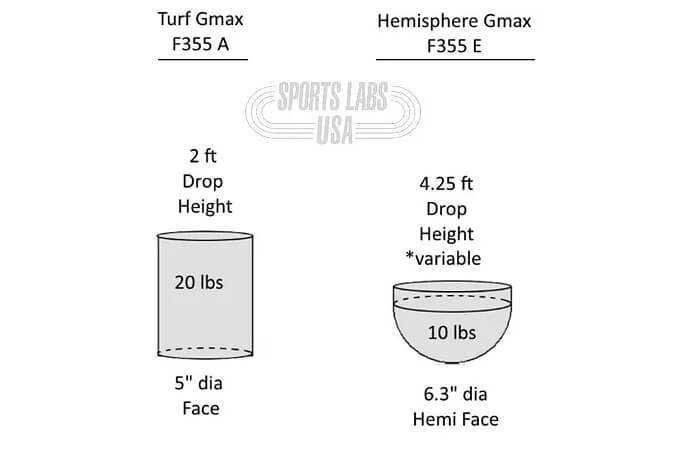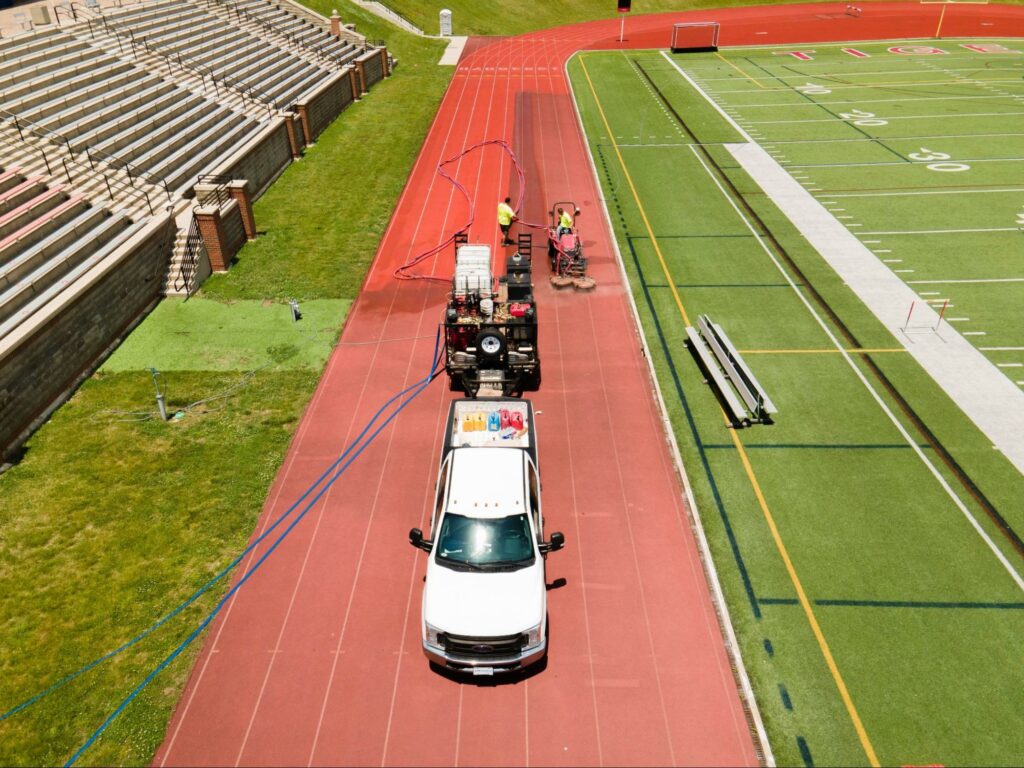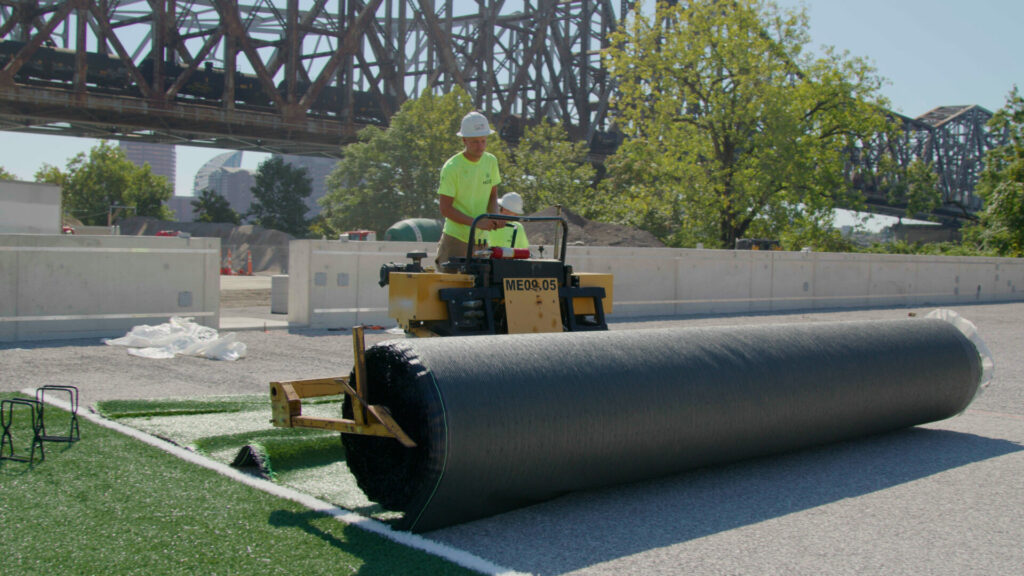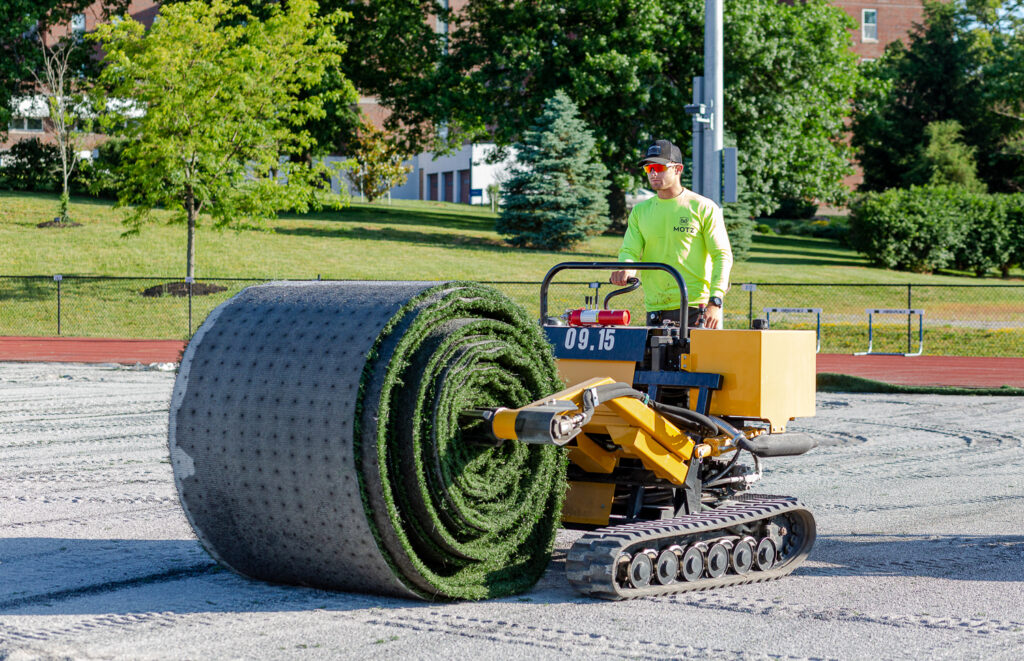
Sports Field Blog
Subscribe To Email Updates
Subscribe to our weekly newsletter and we’ll send updates straight to your inbox
What the heck is HIC? Testing Sports Turf Fields
One of today’s concerns for athletes playing on synthetic turf fields is whether or not they are able to perform to the best of their abilities on the field with an unnecessary risk of injury. Field owners, parents, coaches, and athletes consider the best way to evaluate the safety of a playing surface. As the discussion of sports field safety continues to grow, specifically regarding the role of the surface in head and body impacts, there is an increasing focus on the debate between the effectiveness of using a HIC test and/or a GMax test. Motz’s opinion is that both tests should be used, but for different reasons.
The HIC (Head Injury Criterion) Impact Test (ASTMF355E) is currently one of the most effective ways to measure the probability of head injury occurring from impact with a surface. This is one of the reasons World Rugby chose HIC as the standard for impact measurement in 2010. The Concussion Legacy Foundation reported that 1 out of every 5 concussions occurs when the head impacts the playing surface. With a recent focus on reducing concussions, the HIC test is gaining a lot of attention from field owners as a way to better understand how their field will react during an impact.
With this test, a missile is dropped from various heights and the impact of the fall is measured. Unlike the GMax missile, the HIC missile used is hemispherical and weighs 10.1 lbs which closely simulates the shape and weight of the average human head. Within the missile is a device that measures the acceleration of the missle at impact. The peak acceleration is used as a measure of impact severity. The HIC tests provide a value on a scale of 0 to 2000 and correlates to a drop height at which a score of 1,000 is achieved. This height is called the critical fall height. World Rugby has adopted a 1.3 meter standard which means that at 1.3m, the HIC score must be less than 1000.
Another common impact test is the GMax test, which is more effective in measuring body injury impact rather than head injury. This test, ASTMF355A, involves dropping a 20.0-lb, flat-ended missile akin to a torso or body part in the same location and then measuring the shock-attenuation performance of the field. In other words, the Gmax measures how well the field-turf absorbs the impact. This test method has been used for nearly 20 years in the synthetic turf industry and is derived from a test method used by Ford and GM in crash test dummies as far back as the 1960’s. Three drops are taken at ten prescribed locations throughout the field with the GMax score of each location being the average of the second and third drops. No drop at any spot on the field can exceeds a score of 200 G’s, according to ASTM. These standards have been the subject of much debate and the Synthetic Turf Council has adopted a lower, upper limit of 165.

To get a more complete picture of field safety, the HIC and GMax should be used in conjunction with other athlete-surface tests such as Rotational Resistance, Energy Restitution, Force Reduction or Vertical Deformation. Together these will measure the playing characteristics that are important for an athlete. For example, a low Gmax field may indicate a soft field with a lot of vertical deformation which can elevate rotational resistance scores and increase the likelihood of lower leg injury. A well designed field strikes a balance between all of the characteristics.
All things considered, both the HIC test and Gmax test are important measurements of athlete performance and safety on the field. However, when testing for the risk of head injuries such as concussions, it is highly recommended that the HIC is used over Gmax. While conversations revolving around sports injuries continue to increase, there will only be more understanding and improvements developed in overall field safety measurement.
Learn more about Gmax: Motz365 includes Gmax as part of our synthetic turf maintenance process. Find out more about Gmax and our Motz365 program here.
Similar Blogs



